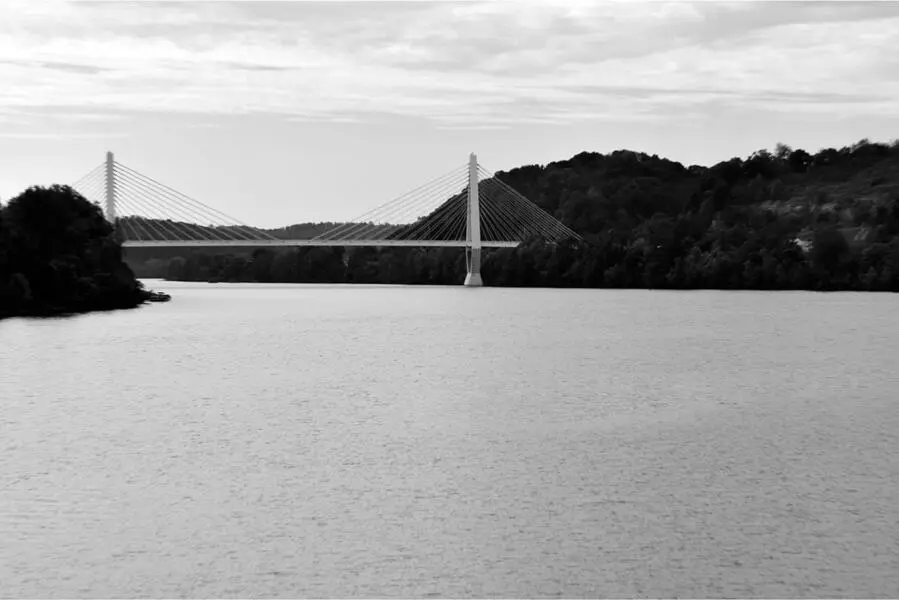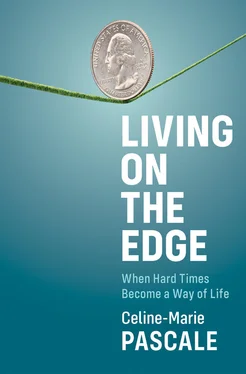1 ...7 8 9 11 12 13 ...21 36 36 See https://datacommons.org/place/country/USA.
37 37 JOUET, M. 2017. Exceptional America: What Divides Americans from the World and Each Other, Oakland, University of California Press.
38 38 PIKETTY, T. 2014. Capital in the Twenty-First Century, Cambridge, MA, The Belknap Press of Harvard University Press.
39 39 Ibid., pp. 329–30.
40 40 Ibid., p. 265.
41 41 SOCIAL SECURITY ADMINISTRATION. 2017. Wage Statistics. At https://www.ssa.gov/cgi-bin/netcomp.cgi?year=2017.
42 42 TEMIN, P. 2017. The Vanishing Middle Class: Prejudice and Power in a Dual Economy, Cambridge, MA, The MIT Press.
43 43 See https://www.epi.org/blog/top-1-0-percent-reaches-highest-wages-ever-up-157-percent-since-1979. See also SOCIAL SECURITY ADMINISTRATION. 2017. Wage Statistics. At https://www.ssa.gov/cgi-bin/netcomp.cgi?year=2017.
44 44 In 2018, this group of workers paid an income tax rate of 24.2% – a rate that has been relatively steady. Meanwhile, the 400 wealthiest families faced an income tax rate of 23%. If this might seem fair, given that a larger sum of money is being taxed, consider that the income tax rate for the wealthiest 400 families was 47% in 1980 and 56% in 1960. See SAEZ, E. & ZUCMAN, G. 2019. The Triumph of Injustice: How the Rich Dodge Taxes and How to Make Them Pay, New York, W. W. Norton & Company.
Across the US personal relationships are largely segregated by both class and race, even if our work relationships are not. As a consequence, it might be difficult to imagine what life looks like for the millions of people living on the edge. In this chapter, you will meet people whose lives and personalities could not be more different from each other: Michael Chase and Rose Taylor in Southeast Ohio; Ellison Thompson and Erika Brooks from the Standing Rock Sioux Reservation; and Vanessa Torres and Puppy Love (PL) from Oakland, California. The stories of the struggling class are not just stories about people. They are also stories about places. Where we live shapes our opportunities, our troubles, our aspirations, and our fears. The places we call home can give us a tremendous sense of identity and belonging and sometimes a depth of sorrow that escapes words.
In Northern Appalachia, my trip begins in West Virginia, and Southeast Ohio, just as autumn arrives. 1The beauty of this region is breathtaking and seemingly unending. I take US 33, a two-lane road that winds through the wooded mountains of West Virginia. Much of the time there is a steep hill on one side and a drop off to the Little Kanawha River on the other. The narrow, winding mountain road is well-traveled by cars, pickups, and enormous coal trucks, all keeping pace with the 55 mph speed limit. For forty miles I search for a berm, a pullout, or a crossroad. There are none. My palms sweat every time I see a truck in my rearview mirror. Occasionally a small piece of land crops up between the road and the hillside, or between the road and the river. Single-wide trailers, and now and then a rambler, are nestled into these isolated patches.
This region was once home to many Native Americans, including the Shawnee, Cherokee, Manahoac, Monacan Chippewa, Delaware, Iroquois, Mingo, Miami, Seneca, and Wyandot. By 1843, all Native peoples had been forcibly removed from the region. By 1863, when West Virginia was founded, it was a racially segregated state in which it was illegal to register a child as “Indian” at birth. 2And it remained illegal to indicate Native American ancestry on birth records until 1965, a year after the Civil Rights Act. In 2017, when my journey begins, census records identify the region as 90% white; the presence of Native peoples lingers only in the names of places – like the Little Kanawha River. There are no federally recognized Indian nations in North Central Appalachia today.
The winding mountain road is itself an historical site. Designated in 2015 as the Blue-Gray Highway, it became an official reminder of the numerous Civil War battles fought in the area. Although I don’t see mention of the battles, I count three Confederate flags on this stretch of road – fewer than I had expected. Even so, I find them unnerving. Carried today by white supremacists on their marches, the flag is an emblem of the Confederacy and feels like a warning.
Eventually, the landscape opens to a crossroad, and the Little Kanawha River joins the wide and winding Ohio River. Where West Virginia and Ohio meet, an enormous coal power plant rises from the flatland along the Ohio River and looms over empty grassy lots that line the street. The place could be a scene from the old TV show The Twilight Zone . It looks as if the houses were plucked up, leaving driveways, patios and lawns intact. Smokestacks from the coal plant that look like nuclear reactors quietly churn out billowing clouds as a lawnmower drives back and forth across the empty landscape. This had been the village of Cheshire; the power company polluted the town so severely they paid $20 million to buy out residents. 3I’ll return to this in Chapter 3, but for now the journey continues northward toward Athens. In minutes, a beautiful cable-stayed bridge takes me across the Ohio River to Pomeroy, Ohio. The $65 million bridge is stunning both in its modern expanse and its dissonance in relationship to the former village of Cheshire and the economically distressed town of Pomeroy, which it connects.
Pomeroy, the county seat for Meigs County, was once a mining town producing both salt and coal. Its claim to fame rests on its being the first town to load a coal barge onto the Ohio River. In the 1990s the mining industries shut down and the economic distress in Pomeroy is evident. Historic buildings with charming facades still line the streets, yet closed storefronts outnumber open businesses on the main thoroughfare. The town looks out onto the grand Ohio River and it’s easy to imagine this as a tourist destination, the historic buildings filled with cafés, restaurants, and specialty shops. But just across the river, in Cheshire, the Kyger Creek and Gavin Power Plant burns about 35,000 tons of coal per day. It’s rated as one of the most polluting power plants in the country.

The Pomeroy–Mason Bridge connects the former village of Cheshire with Pomeroy, Ohio.
Eventually, I reach Athens County, Ohio. It is one of eighty-three counties in Appalachia rated as distressed by the Appalachian Regional Commission (ARC), and one of six distressed counties in Southeast Ohio. 4Counties designated as “distressed” face significant structural challenges and place economically in the bottom 10% of counties nationally. Before the pandemic, the poverty rate in Athens County hovered at 33%. In towns throughout the county the economic hardship is evident in the quality of housing, the number of cars that are falling apart, the number of shuttered businesses as well as in the kinds of businesses that remain open. Along some of the county’s back roads, ramshackle trailers and dilapidated houses rise precariously in the hollows and hillsides. On the surface, these communities resemble those I have seen on Native American reservations.

Athens County once prospered from its brickwork, including the renowned star bricks.
Unlike many Appalachian counties, Athens County is home to two colleges. Ohio University, located in the city of Athens, has approximately 23,000 students – equal to the number of local residents in the city and about one-third of the entire county population. The university has a big impact. Although the majority of students come to the university from red counties in Ohio, their presence at OU tilts the town toward more progressive politics than those of the surrounding communities. Out of eighty-eight counties in Ohio, Athens County is one of five blue counties. Students bring an influx of cash into the economy that supports restaurants and local businesses. They also push rents higher. Landlords can make more money by renting a house by the bedroom to students than by renting the entire unit to a single family. Affordable housing for locals in Athens County is rare. In addition, the large student body competes with locals for service industry jobs and arguably drives down wages in those jobs. As in most college towns, locals tend to view the student population as a mixed blessing. The town has a reputation for a drinking culture. On the main drag of Court Street, I count twenty-two bars in three blocks and quickly find fourteen additional places to go for a drink in side streets. All of them are successful businesses that operate all year.
Читать дальше














